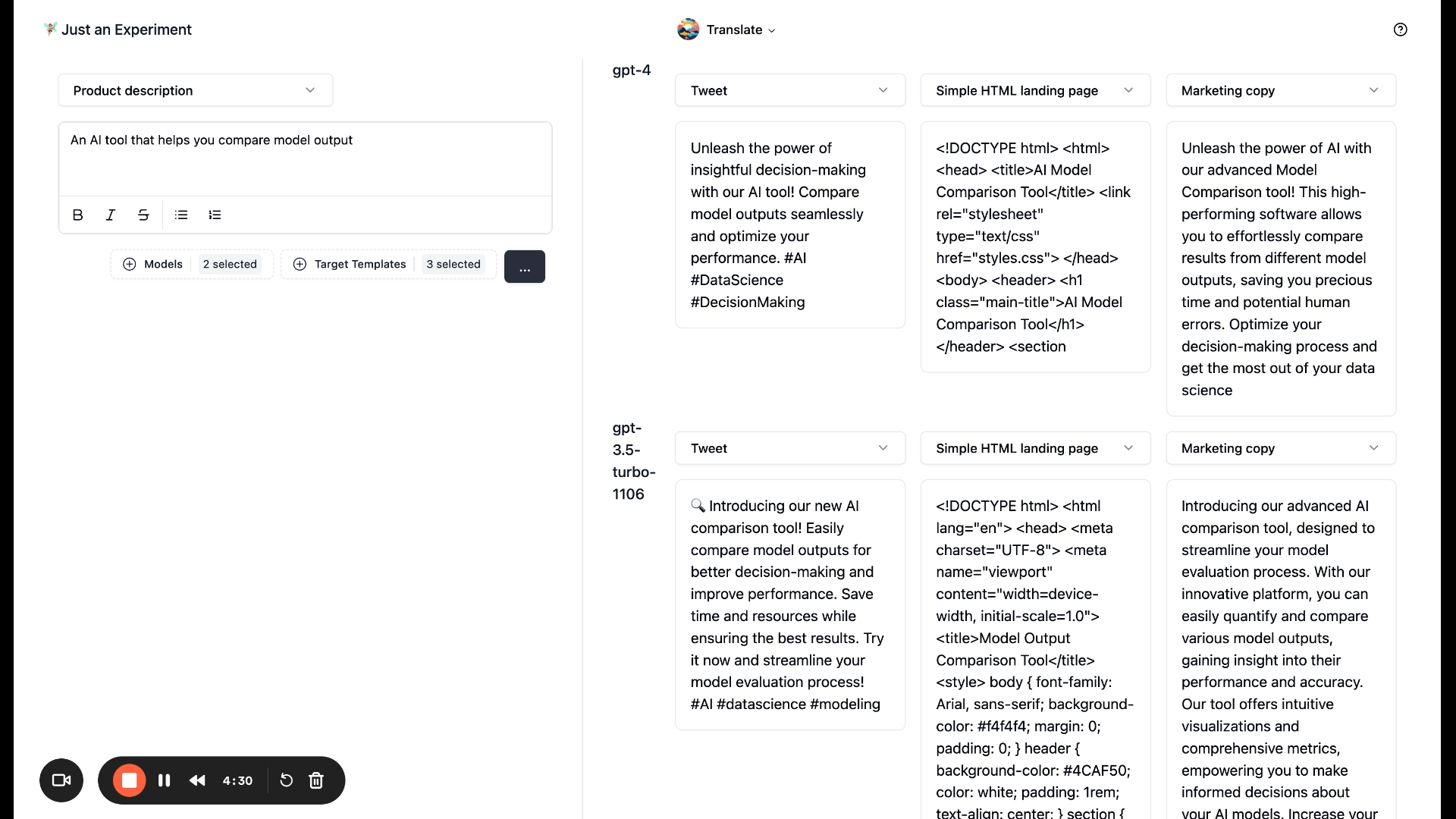
Experiment Length:
Estimated Time: 1 week
Actual Time: 1.5 weeks
Summary:
In this experiment, I set out to create a translation interface designed to extend beyond solely natural language translation like English to Spanish translation.
This tool aims to simultaneously manage multiple types of content transformations, such as converting blog posts into various social media formats and personal reflections into actionable tasks.
I drew interface inspiration from Google Translate and OpenAI’s completion interface for their text transformation.
This tool is intended to handle multiple contexts and content types in one go, which is a key difference from existing tools that focus on giving single output.
Plan:
The development plan involved using Tailwind CSS, Next.js, and GPT for backend processing, with CSS styling enhancements provided by ShadCN.
The user interface was designed to mirror the simplicity and accessibility of Google Translate, and meant to be web and mobile friendly.
Result: 🔴 Fail
Despite the web interface being clean and meeting basic expectations in design and usability, the project fell a bit flat.
I didn’t have time to implement a mobile version—a critical component of the initial design focus—along with more sophisticated prompting for each template, including providing examples and system prompts.
What I Learned:
I would’ve started with a mobile-first design since mobile has less screen real-estate.
Also, the output quality was not so good. I realized that I need a more interactive and iterative translation process, as the current system’s one-off conversion method did not effectively meet user needs. Despite people complaining about all the AI chat interfaces out there, the iterative and collaborative nature of RLHF + chat interface is a big reason why it’s taken off. Perhaps this can be mitigated by providing more fine-tuned granularity on system prompts, examples, and prompting techniques per template.
This post was generated by running my experiment notes through ChatGPT.